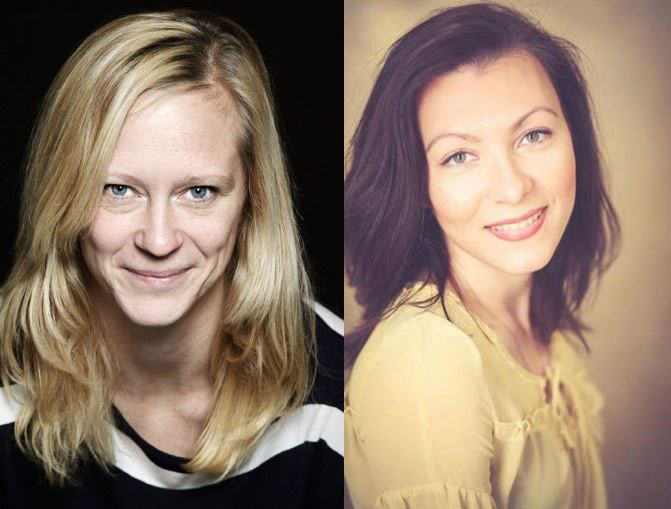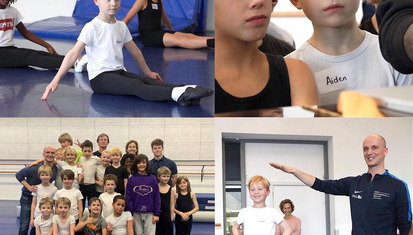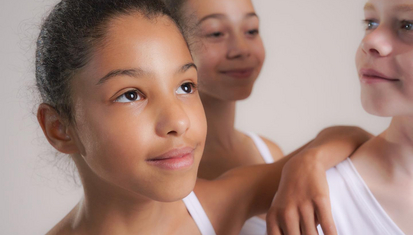Two new members of staff joined the Dutch National Ballet Academy at the start of the new school year: Swantje Schäuble and Hilda Kandil-Balog. Swantje has been giving dance history lessons to all the Associate Degree and Bachelor’s students since August. And in the newly created position of pupil care coordinator, Hilda is working mainly with the Preliminary Course pupils, but where necessary she’ll also be supporting Bachelor’s students from abroad.
Swantje Schäuble (Nuremberg, Germany) trained as a dancer at the Rotterdam Dance Academy (now Codarts) and danced with Piet Rogie, Krisztina de Châtel, LeineRoebana and Boukje Schweigman, among others. She went on to study Dramaturgy and Theatre Sciences. Since 2018, she has been working as a theory teacher with Lucia Marthas Institute of Performing Arts, with Codarts and since this year with the Dutch National Ballet Academy. She is also a dance teacher and has been teaching countertechnique in the Netherlands and abroad since 2008.
“Teaching theory is something that crossed my path by chance. The Latin dancer Roemjana de Haan was one of my fellow students on the Master of Theatre Sciences course. She was teaching at Lucia Marthas and asked if I might be able to help the students gain more insight into the professional field of dance and give them tips in analysing performances. The Dutch National Ballet Academy is now the third academy I’m teaching at. I don’t come from a classical background myself, so Ernst Meisner has actually drawn a wild card by appointing me. But it clicked straight away at our first talk. Ernst asked me to take the classical ballet canon as the starting point for my lessons and to make that heritage ‘tangible’ to the students, as it were. I will certainly be approaching this not just in a theoretical way, but I want my lessons also to link up with what the students are doing at the moment, as well as making use of all the knowledge at hand at the Dutch National Ballet Academy. Most of the teachers are like walking archives. I recently asked Jane Lord to come to a lesson and talk about Balanchine’s Concerto Barocco – which the first-year Bachelor’s students are learning at the moment – and also to share her experiences as Juliet in Rudi van Dantzig’s Romeo and Juliet. But the ballet canon is not a book set in stone. The art of dance is alive and continually developing. So recently, I also invited Sedrig Verwoert – who has just created a new work for Dutch National Ballet – to come and share his experiences with the students. Partly because of my own background, I’m also continually on the lookout for comparisons to other dance forms and styles. As the students come from all over the world – from Japan to the United States, and from Israel to Argentina – I really want to use that international context as well. My initial experiences as a new team member have been very positive. There’s a wonderful exchange of ideas and great openness. And the NBA teaching team is sincerely willing to look further than their own discipline, which has a very inspiring effect”.
Hilda Kandil-Balog (born in former Yugoslavia) trained at the Dutch National Ballet Academy herself. She completed the Preliminary Course and went on to take her Bachelor’s at Codarts, in Rotterdam. But in the end, she didn’t choose for a career as a dancer. She studied Educational Theory and got a Master’s degree in Remedial Education. Since then, she’s held various positions in the healthcare and education sectors and with government institutions.
“I still remember being accepted for the Dutch National Ballet Academy as a little girl. It was the happiest day of my life up to then. After our family fled from former Yugoslavia, it was the first time I’d felt accepted somewhere. I felt like I’d come home. And what’s really special is that I experienced that feeling of coming home once again last August, when I entered the Preliminary Course building at Agamemnonstraat. All those familiar faces from before – it felt like getting into a nice warm bath! As a pupil care coordinator, I’m a listening ear for any pupil who needs it. I also help pupils who need a bit of extra support mentally, or are dealing with long-term injuries. Along with the Health & Performance team, I’m concerned with health in the broadest sense of the word. That also means I’ll be supporting the teaching team and arranging training for them in the field of child development. How do children’s brains work? How do they learn? What’s necessary to provide them with a really safe learning climate? How do you address difficult topics? How do you give feedback? And so on. In my job as care coordinator, I’ll be focussing mainly on the Preliminary Course, but I’ll certainly be there for the foreign students too, who are sometimes still minors and are coping with lots of new things in the Netherlands”.




